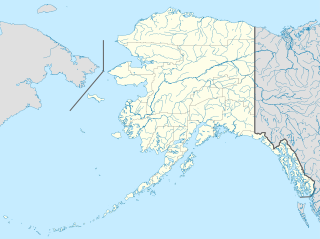
Lake Washington steamboats and ferries operated from about 1875 to 1951, transporting passengers, vehicles and freight across Lake Washington, a large lake to the east of Seattle, Washington. Before modern highways and bridges were built, the only means of crossing the lake, other than the traditional canoe, was by steamboat, and, later, by ferry. While there was no easily navigable connection to Puget Sound, the Lake Washington Ship Canal now connects Lake Washington to Lake Union, and from there Puget Sound is reached by way of the Hiram M. Chittenden Locks.

The sternwheeler Multnomah was built at East Portland, Oregon in 1885 and operated on the Willamette and Columbia Rivers until 1889 in the United States. She was later transferred to Puget Sound and became one of the better known steamboats operating there.

The steamboat City of Shelton operated in the 1890s and early 1900s as part of the Puget Sound Mosquito Fleet.

The steam tug Echo operated in the early 1900s on Puget Sound.

The steamboat Dix operated from 1904 to 1906 as part of the Puget Sound Mosquito Fleet. She was sunk in a collision which remains one of the most serious transportation accidents in the state of Washington to this day.

The steamboat Rosalie operated from 1893 to 1918 as part of the Puget Sound Mosquito Fleet, also operating out of Victoria, B.C. In 1898, Rosalie went north with many other Puget Sound steamboats to join the Klondike Gold Rush.

The sidewheeler Idaho was a steamboat that ran on the Columbia River and Puget Sound from 1860 to 1898. There is some confusion as to the origins of the name; many historians have proposed it is the inspiration for the name of the State of Idaho. Considerable doubt has been cast on this due to the fact that it is unclear if the boat was named before or after the idea of 'Idaho' as a territory name was proposed. John Ruckel also allegedly stated he had named the boat after a Native American term meaning 'Gem of the Mountains' he got from a mining friend from what is now Colorado territory. This steamer should not be confused with the many other vessels of the same name, including the sternwheeler Idaho built in 1903 for service on Lake Coeur d'Alene and the steamship Idaho of the Pacific Coast Steamship Line which sank near Port Townsend, Washington.

The river sternwheeler Ramona operated from 1892 to 1908 on the Willamette River in Oregon, on the Stikine River running from Wrangell, Alaska into British Columbia, and the Fraser River, in British Columbia. This vessel should not be confused with the coastal steamship Ramona which also ran in Alaskan waters.
Elk was a steam tug that operated on Puget Sound, and earlier, from 1880 to 1896, on Lake Washington under the name of Katherine.

Alice was a Puget Sound steam passenger ship built in 1897. Alice was later rebuilt into a steam tug, and later converted to diesel power and renamed Simon Foss. As a tug, the vessel was in service until 1963. This vessel should not be confused with the similarly designed vessel Alice, built in 1892, which later became Foss 18.

Foss Maritime is an American shipping company. The company was founded in 1889 by Thea Foss (1857–1927) and her husband Andrew Foss. The company is now the largest tug and towing concern on the west coast of the United States.
The Pacific Tow Boat Company was a tugboat and towing firm based in the Puget Sound area of Washington State active in the first part of the 1900s.
D.R. Campbell was a sternwheel steamboat built in Seattle in 1898 which ran on the Yukon and tributary rivers in Alaska.

The Moran sternwheelers were a set of 12 almost identical sternwheel steamboats built in 1898 by the Moran shipyard in Seattle, Washington to run on the Yukon and tributary rivers in Alaska.

Otter was a wooden sternwheel steamboat that was used in Puget Sound and briefly on the Columbia and Stikine rivers from 1874 to 1897.
Rabboni was a steam tug that operated on the west coast of the United States starting in 1865.

Dode was a steamboat that ran on Hood Canal and Puget Sound from 1898 to 1900.

General Miles was a steamship constructed in 1882 which served in various coastal areas of the states of Oregon and Washington, as well as British Columbia and the territory of Alaska. It was apparently named after US General Nelson A. Miles.

Potlatch was a steamship which was operated on Hood Canal from 1912 to 1917, on Puget Sound from 1917 to 1937, although the vessel was little used after 1917.
























